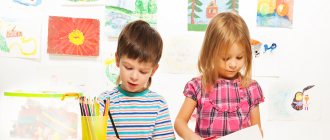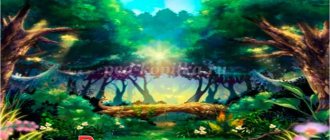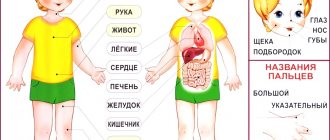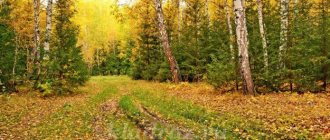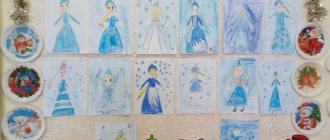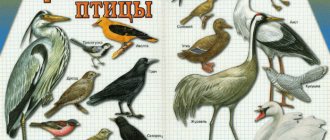MAGAZINE Preschooler.RF
“Labor education of children in the middle group of kindergarten”Target:
Formation of a positive attitude towards work in children 4-5 years of age.
Tasks:
- Cultivate a desire to work.
- Learn to carry out individual and collective assignments, develop the ability to negotiate with the help of a teacher about the distribution of work, and take care of the timely completion of a joint task.
- To instill in children independence, accuracy, mutual assistance, caring for each other and responsibility for a common cause.
- Explain to children the importance of their work.
- Encourage initiative in helping friends and adults.
- Learn to finish what you start.
Types of work of preschool children:
- Self-service.
- Household work.
- Labor in nature.
- Manual labor.
Forms of labor organization:
- Errands.
- Duty roster.
- Collective work (common, joint).
Labor education is an important means of comprehensive development of the personality of a preschooler. The main goal of work is its educational influence on the child’s personality. Work also has a significant impact on the mental development of a child. It requires intelligence, initiative, concentration, and trains memory. In the process of work, adults give children useful knowledge about objects, materials and tools, their purpose and use.
Children in the middle group of kindergarten are characterized by elementary household work - self-service, associated mainly with satisfying their personal needs. Children must master such actions and operations of household activities as: setting the table for lunch, breakfast or afternoon tea, preparing materials for classes, maintaining order in the room and area.
In the middle group, in addition to consolidating previously learned skills, work is being done to develop more complex self-care skills. The children are given the task of providing mutual assistance when getting dressed: tying a scarf, teaching how to tie shoes, helping the baby get dressed, etc.
In the middle group, the content of household labor becomes more complicated mainly due to an increase in the number of processes of this labor. So, at the beginning, under the supervision of a teacher, and by the end of the year, children independently maintain order in the group and in the area, take part in cleaning (wipe shelves, wash toys, etc.). In this age group, children master the integral processes of household labor (washing doll clothes, washing toys, setting the table). This requires children to know specific techniques and operations, and to be able to use them in the right sequence.
You can cultivate in children the ability and desire to work through the organization of work activities:
- Orders
- Joint activities of children with the teacher.
- Responsible for cafeteria and classes.
Assignments are the simplest form of organizing the work activities of preschool children. Errands are widely used in all age groups of kindergarten
In the practice of educational work with children, individual assignments are especially common, less often collective ones, to small subgroups of 2-3 people. Since it is much easier to teach one or two children than a whole group, and monitoring the actions of everyone is more convenient.
Duty duty is a more complex form of organizing children’s work. They require more independence from the child. The attendants learn to carry out the assigned task completely; this requires children to know the sequence of necessary actions.
The volume of tasks for labor education increases from the middle group, reaching a maximum in the senior group. It is in the middle group that children actively master various work skills and techniques of working in nature, household and self-service work.
In the process of labor, children acquire the necessary skills, including the skills of caring for plants and animals (labor in nature), master the simplest operations with objects, learn about materials and their properties (manual labor). Children develop an interest in work and a desire to work (household work, self-service).
| Next > |
Abstract on the topic “Adult Labor”
Summary of direct educational activities for children of the middle group Educational area “Cognition” Formation of a holistic picture of the world, broadening their horizons
Topic: “Adult Labor”
Program content:
Correctional educational tasks:
— continue to shape children’s ideas about professions; — learn to form the dative case of nouns through the game “Who needs what?”; - learn to answer questions in complete sentences; — continue to introduce the numbers;
Correction and development tasks:
- develop fine motor skills; - develop coherent speech; — develop orientation in macrospace; - develop visual-figurative thinking based on the game “Who is doing what?”;
Educational tasks:
- cultivate respect for the work of adults; — develop the ability to answer by raising your hand. Materials: pictures of assistants' objects, the sun with rays.
Move
1. Introductory part. Conversation
Educator: “Guys, today we will talk about professions. Let's remember what professions you know? (Cook, doctor, salesman, teacher, etc.) Educator: “That’s right, there are a lot of professions in the world, all of them are very necessary and important for us. Each person in one profession or another has his own objects, which we call assistant objects.” Educator: “Tell me, what time of year is it now? How did you understand this? Name the signs of autumn."
(It has become colder, the days have become shorter, the nights are longer, the sky is gloomy, it often rains, insects hide in cracks and under the bark of trees, migratory birds fly south, people begin to dress warmer, the leaves turn red, turn yellow and fall to the ground.)
Educator: “How does the sun shine in autumn?” (In autumn, the sun shines dimly and weakly.) Educator: “So the sun came into our group, but it is sad, and it is sad because it has lost all its rays. Let's help him? To do this, you need to find the ray and complete the task that is written on it. A number is written on each ray. Be careful".
2. D/i “Who does what?”
Educator: “Look around you and find a ray with the number 1. Questions are written on this ray, we need to answer them. Remember to only answer by raising your hand. What is the driver doing?
(The driver carries cargo and people)
Educator: “What does the cook do?” (The cook prepares breakfast, lunch, dinner, etc.) Educator: “What does the doctor do?” (The doctor treats, prescribes medications, prescribes injections.), etc.
3. D/i “Who needs what?”
Educator: “Look carefully around and find a ray with the number 2. Now I will name the profession, and you will need to select and name the item assistant. What does a tailor need? What does a doctor need? What does a builder need? What does the seller need, etc. Well done!!! You have completed this task and already two rays of light have helped us find the sun.”
4. D/i “Correct the mistake”
Educator: “We are looking for a ray with the number three. So, there are sentences written here, you need to listen carefully and say this is true or not? The cook treats, and the doctor cooks. This is true?" (Trick-track is not like that.) Educator: “How?” (The cook cooks, and the doctor treats.) Educator: “The hairdresser sews, and the tailor cuts hair. This is true?" (Backgammon is not like that.) Educator: “How?” (The hairdresser cuts the hair, and the tailor sews.) etc.
5. Speech outdoor game “Cosmonaut”
Educator: “Now find the next ray. What number will you search with? On this ray it is written that we need to do a physical exercise and guess the riddle: He is not a driver or a pilot, He does not fly a plane, But a huge rocket. Children, who will say this? (Cosmonaut) (Children complete the task, pronounce the words.)
6. Educator:
“Now let's find the last ray with the number 5. It says that we need to solve riddles. Be careful. Whoever guessed it raises his hand. We play in the profession, We choose them according to our liking, And we dream that Mom and Dad will quickly become older, So that we don’t just dream, And who to be, we decide and become.
Sasha proudly carries the plane on a string, He is preparing to fly, So he will grow up... (to be a pilot).
The pilot Borya has a friend who paints everything around him, draws rain on the window, which means he will grow up... (artist).
Boris has neighbors - Twins Denis and Fedya. They cook water in the evenings. So they will be... (cooks).
Borya is also friends with Dasha, Dasha spoon-feeds porridge to the capricious doll Katya. She is growing up... (teacher).
Ksyusha and Zhanna infected Dasha with porridge with semolina, And then treated with cabbage soup, They want to become... (doctors).
Doctors also treated Oleg, Oleg is a fortress sculptor, He is hereditary... (builder).
Everyone needs the work of a builder, Everyone needs a delicious dinner, A doctor to treat everyone, And a teacher to teach, A pilot is needed to fly, Well, who do you want to become?”
7. Educator:
“Well, we helped the sun find all its rays, it immediately began to smile, thanked us and gave us its warmth.”
Author of the material: MBDOU Kindergarten No. 32, Arkhangelsk, 2013, teacher: Alexandra Vasilievna Ivanova
Also on topic:
How to teach a child to work. How to introduce children to the work of adults
Middle group. Junior preschool age. Children 4 - 5 years old
Summary of educational activities for children of the middle group “Introduction to the profession of “Hairdresser” Goal: Introduction to the profession of “Hairdresser”
.
Objectives: Educational - to introduce the profession of “Hairdresser”
.
Developmental - Develop children's coherent speech. Educational - to cultivate respect for people of different professions . Integration of educational areas: “Cognitive development”
,…
Project "Professions" (middle group)
Project for middle group children. Professions Author : teacher of secondary group No. 7 “Ryabinka”
MAOU Secondary School No. 8
(D/O – II)
Semushkina Olga Vladimirovna Project topic:
“
Professions ” Implementation period: 10/04/2021-10/15/2021 Short-term Project participants: Teachers, group students and…
